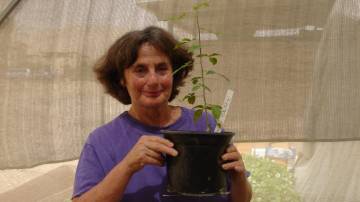Scientists Grow 1,000-Year-Old Seed

Forty years ago, an archaeological dig north of Jerusalem uncovered a well-preserved ancient seed, estimated to be over 1,000 years old. Recently planted, it has now grown into a mature tree, possibly a long-extinct species once used for medicinal purposes, and even mentioned in the Bible.
Initially, Israeli botanists, including Dr. Sarah Sallon of the Hadassah University Medical Center, couldn’t identify the seed’s species. Following a technique used to germinate ancient date palm pits, Dr. Sallon treated the seed with hormones, liquid fertilizer, and water, then planted it. Five weeks later, despite a millennium of environmental exposure, it sprouted. Now standing 10 feet tall, the tree has garnered global interest. Based on genetic analysis and expert consultation, Dr. Sallon’s team believes the tree might belong to the Commiphora genus, related to the myrrh tree. However, chemical tests showed no traces of the fragrant compounds found in Judean Balsam, a historic medicinal plant they initially suspected. Instead, the leaves contain guggulterols, a group of phytochemicals also found in Commiphora wightii, known for its potential cancer-fighting properties.

Ancient texts, including the Bible, refer to a medicinal balm called ‘tsori.’ Dr. Sallon’s team believes this is what they may have rediscovered, although confirmation will only come once the tree produces flowers or fruit. Dr. Louise Colville from the Royal Botanic Gardens, Kew, praised the achievement of reviving a seed this old, highlighting its significance for the potential of long-term seed preservation. “Seeing the potential for such extreme longevity gives us hope for seed banking and storage,” she commented.